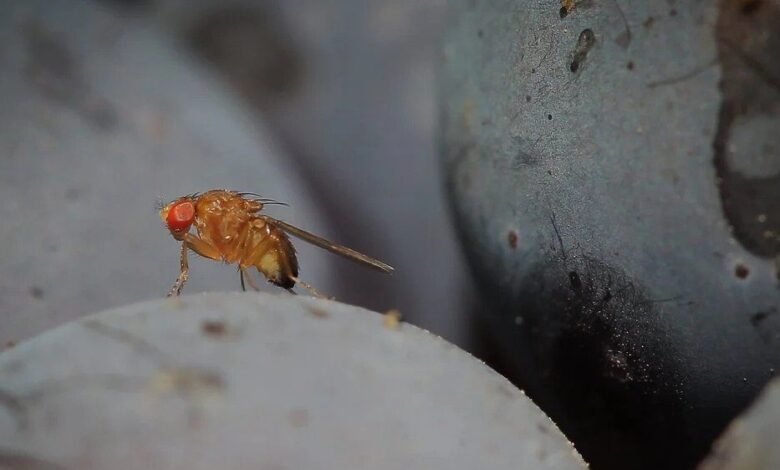
A fruit fly sits on a grape. Adult fruit flies are typically only a few millimeters long. Photo Credit: Fredrik von Erichsen / DPA / AFP via Getty Images
AnimalsTechnology The WorldTake a Look at This Super-Detailed Map of an Insect’s Brain
After 12 years of efforts, a team of neuroscientists managed to create a detailed map of an insect brain – marking it the most complex map of a whole brain ever made – in the hopes of better understanding how the animal (and by extension, the human) brain works.
“It is a tour de force of how we understand the ways in which brains are connected,” explains Timothy Mosca, a neuroscientist who studies fruit fly synapses at Thomas Jefferson University.
The study presents a “reference map” of the brain of a fruit fly larva – the size of a grain of salt – with 3,016 neurons and 548,000 connections, or synapses. To create such a map, scientists used an electron microscope to image thousands of slices of the tiny insect’s brain. The next step was to identify the neurons in each image and trace their connections to other nerve cells. They discovered that almost 75% of the most well-connected neurons were linked to the brain’s learning center and that the two hemispheres were heavily connected – and appeared similar – contrary to humans whose hemispheres have specialized functions. The human brain contains an estimated 86 billion neurons and hundreds of trillions of synapses, making the number of neural connections vastly higher than the number of stars in the Milky Way. Studying the fruit fly brain could help scientists better understand the human brain since both species have cerebral similarities. For instance, both have regions corresponding to decision-making, learning, and navigation.



